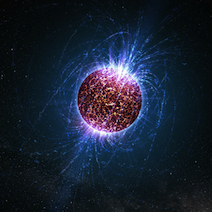The Hubble Space Telescope has glimpsed what might be the most distant galaxy ever detected. It is 13.2 billion light-years away from Earth (the Universe was then about 480 million years old). This discovery reveals that galaxies were forming and growing quite fast in the very early Universe, but also implies that the Universe was then emptier than we thought.

The new galaxy is called UDFj-39546284, and was spotted in the Hubble Ultra Deep Field (UDF) image, obtained by combining near-infrared pictures made by the Wide Field Camera 3 and optical photos made by Hubble’s older Advanced Camera for Surveys. The previous record holder, confirmed in October 2010 at 13.1 billion light-years away was also found in the UDF. The results were published today in Nature.
“It’s amazing that we finally believe that we have observed something at this epoch,” said astronomer Rychard Bouwens, now at Leiden University in the Netherlands, lead author of the paper.
To measure the distance to this galaxy, Bouwens and his colleagues used redshift measurements: this measures how much the light emitted has been stretched by the expansion of the Universe; as objects move apart, the light is stretched towards the red end of the electromagnetic spectrum. The further away an object is, the more the light is stretched.
The galaxy that the team found is so remote that it is right up against Hubble’s detection limit; models suggest that Hubble should have detected many other galaxies at the same period of time, but only this one was found. Considering that the team also found around 60 galaxies at a period about 650 million years after the Big Bang, this implies that galaxies were forming and growing quite fast at this very early time of the Universe.
Further information from Hubble and the yet-to-be-launched James Webb Space Telescope will be needed to get more data, as models favour a greater number of galaxies at this time period. On the other hand, if this candidate is confirmed to be the only one, it would confirm that we are looking back at a time when the very first galaxies were assembled, said co-author Marijn Franx.
